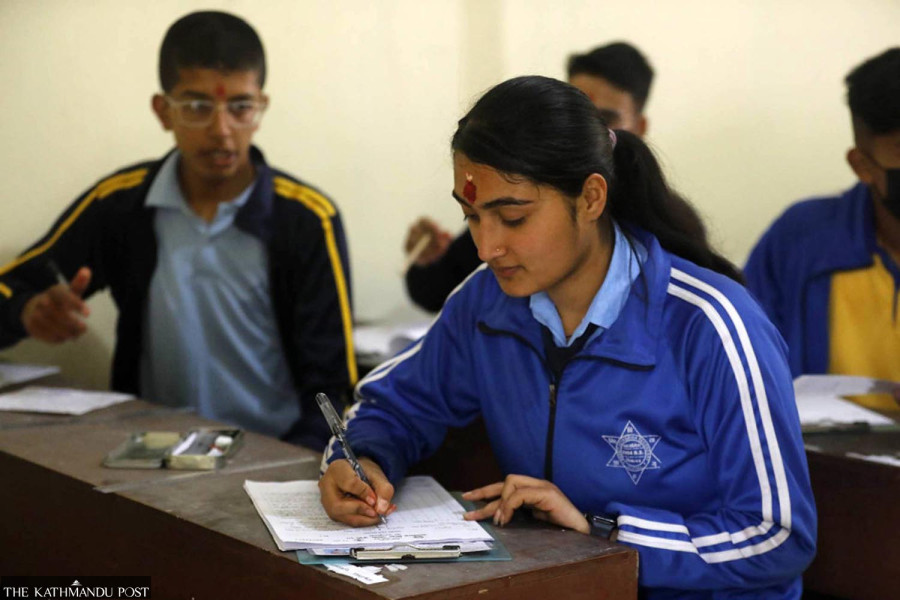Editorial
Spectre of SEE
Time has come to restructure school education and change the focus from rote learning to creativity.
The latest news from Bajhang of students appearing for the Secondary School Examination (SEE) this year descending to Chainpur to enrol in tuition centres, is alarming. As the Post reported on Thursday, over 500 grade 10 students from various schools across the district have been studying at tuition centres since as early as November last year, resulting in the cancellation of classes in schools for lack of students. The case of the Bajhangi students represents the spectre of the SEE across Nepal, as students, parents and schools panic and go the extra mile in the hope of better results. While the students, parents and schools cannot be faulted for approaching the exams with utmost caution, such episodes must make us reconsider the way our children are being educated.
The SEE itself was launched as a reformed version of the School Leaving Certificate (SLC) exams in 2017. But it has, at best, borrowed much of the malaise in the examination system it replaced. The grading system has helped reduce the anxiety of the students appearing in the exams, but it has retained the metaphor of the “iron gate”, which needs to be changed.
For long, Nepal’s educational curriculum, especially at the school level, has primarily focused on imparting theoretical knowledge. While theory is important, it does not fulfil the requirements of holistic education. Rather than create the condition for the flourishing of students’ creativity, the school curriculum is known to restrict it. The students who step out of the school after years of indoctrination in an unimaginative curriculum become conformists rather than creative. As a result, they have a lot of unlearning and relearning to do once they step out of the cocoon of school education.
By the time they sit for SEE, many such students, especially those from rural areas, will already have made up their mind to go abroad, especially to the Gulf countries, to work as labourers. Every young person seems to want to leave the country owing to a lack of opportunities here, and the education system has not been able to fill that gap. This often comes after their realisation that they are not good enough in academics and see no point studying further. This in turn has to do with the lack of options for students who could otherwise excel in vocational education.
The government is learnt to be mulling restructuring the school curriculum, doing away with the SEE altogether. A well-planned restructuring, keeping the principle of producing creative, well-formed minds, would go a long way in making Nepal’s education more suited to our needs. This would minimise the need for students to flock to tuition centres for rote learning in the last few months before the final exams. As Indian politician and public intellectual Shashi Tharoor says, we need to produce well-formed minds rather than well-filled minds. The government, while restructuring the school education system, should keep this ideal of well-formed minds at the centre.




 11.12°C Kathmandu
11.12°C Kathmandu














